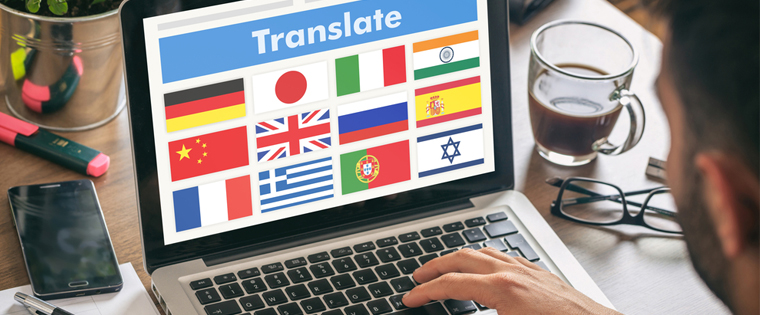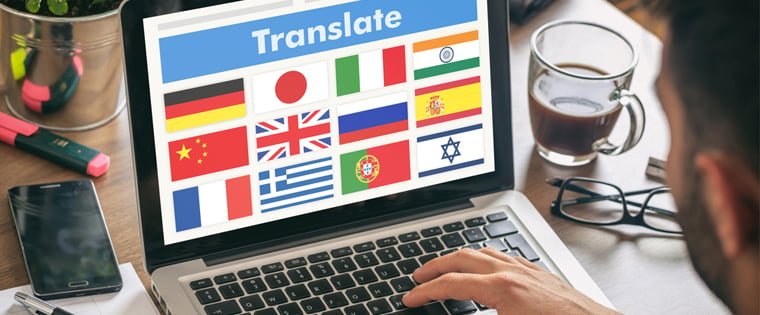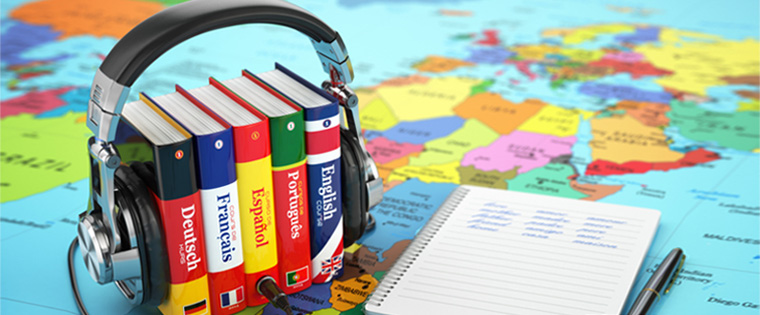Why Human Translation Wins Over Machine Translation?

iWth debates raging on whether machines will take over our jobs in the future, everyone is thinking about those jobs which can easily be done by machines and done well, making human effort and expertise obsolete. In the context of e-learning, translation of e-learning courses is a point of discussion.
→ Download Now: State of Learning (Now and Beyond) [eBook]
There are debates on whether translation of e-learning courses can be better done by humans or machines. Well, to give further insights to this discussion, we will explore in this blog on what works better, and why human translation is a better choice.
Machine Translation
Machine translation comes with its own set of advantages:
- Provides Quick Turnaround: Translations by machines can be done in double quick time, thanks to computer programming, that essentially gathers data over time, to offer the best translation in the target language (Google Translate works on this principle)
- Single Tool: Using a single tool such as Google Translate, Bing Translator or Yandex Translate can translate into multiple languages, almost instantly.
- Free Tools: Most of these translation tools come free of cost or at a minimum cost and these online translation tools are easy to use.
Considering the advantages that machine translation offers, it seems the natural choice, but there are drawbacks
- Most of the times, the translation results are not comprehensive
- There are limitations to the types of text that can be translated
- The end result may not always be a natural or fluent translation
- They could deviate from the original meaning and may not be even readable at times
Human Translation
Accuracy, Style and Flow: These are assured in human translation. This is because human translators are aware of the grammatical structure and style that are different in each language. They consider these differences so that the translated text is natural and fluent. It is also grammatically accurate.
Added to this, they are also experts in the subject. Most translators are native speakers of the language; this makes them familiar with the specificities, expressions, slang, grammar and the nuances of the language. This helps them retain the meaning and tone of the original text while providing the suitable and accurate translation. They can interpret and creatively use slogans, metaphors or puns in the translation.
They are also aware of the colloquial differences between languages; this ensures that the translation strikes the right tone and meaning. They also ensure the flow of text.
Context: While translating e-learning courses, the context must be maintained. Human translators capture the same meaning by interpreting the context rather than just translate the words. Words may have different possible meanings in the target language depending on the context, human translation ensures context is maintained.
Cultural Sensibilities: E-learning courses that are translated into different languages have to consider the language nuances and cultural sensibilities of the learners from different regions. In fact, this is the ground rule for localization of e-learning courses. Translators ensure the content is localized to suit the different cultures learners belong to. They can translate humor, irony and idiomatic expressions while understanding their specific audience and they know when to be literal and when to make changes to adapt to the local sensibilities.
Options
Human translation has a distinct edge over machine translation despite longer turnaround times and higher costs. These downsides can be reduced, provided technology is used to improve the speed of translations. Tools such as ‘Translation Memory’ (TM) can handle low-quality, high-volume, non-critical tasks of translation, while humans can do the more sophisticated work. Translation engines can be trained by human translators for optimum use. Translation of e-learning courses must be accurate; it is not only translation of text but also the translation of elements such as video, audio, images and graphics. Human translation ensures that the course caters to an audience spread across the globe. It ensures that the learning is understood by the diverse audience.
When you want to translate your e-learning courses, look for a translation partner with over 15 years of expertise and employs human translators while making use of technology for faster turnaround. Such a partner will have a well-planned strategy that will ensure quality and reliability of the translation.





